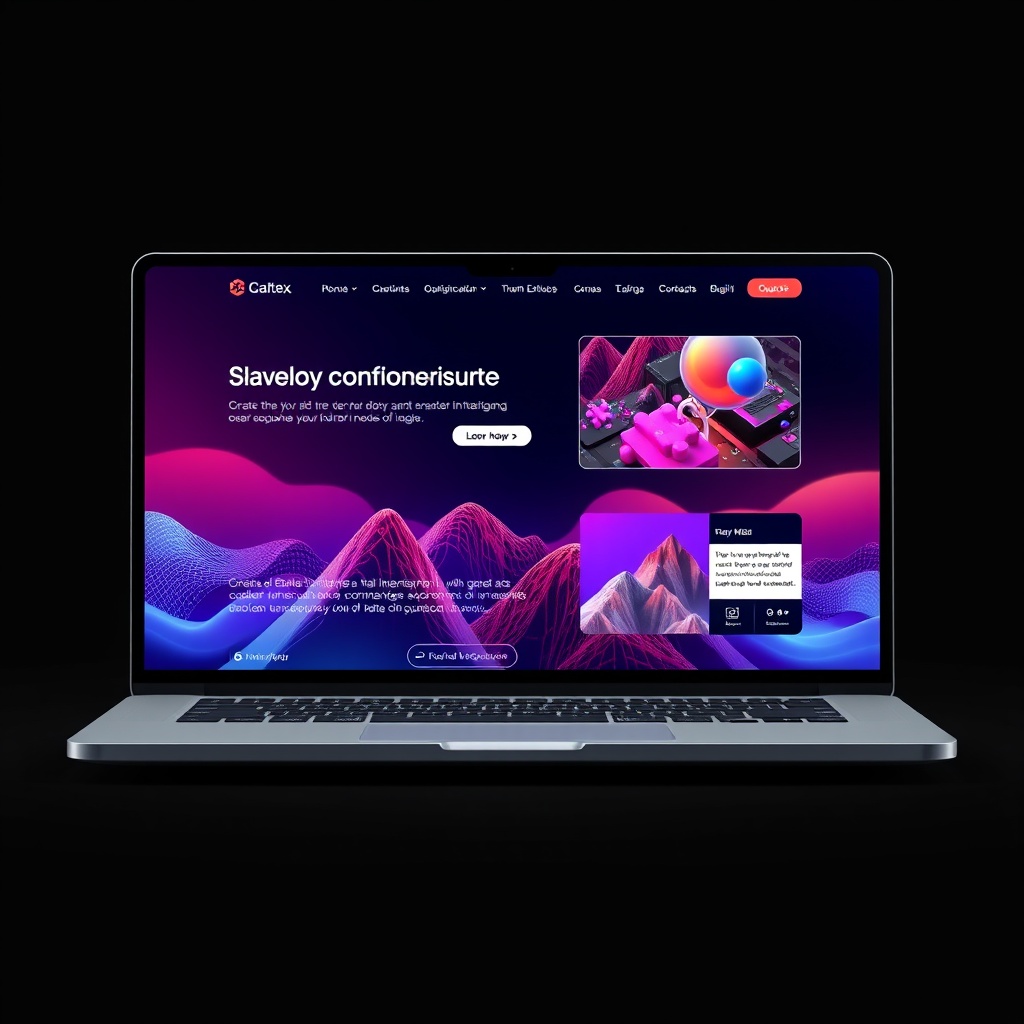Responsive Design Best Practices for Modern Websites
Learn essential techniques for creating websites that look perfect on every device...

Artificial intelligence is fundamentally changing how we approach web design, creating unprecedented opportunities for businesses to deliver more engaging, personalized, and efficient digital experiences. As we navigate through 2024, AI web design has evolved from experimental technology to practical solutions that are transforming the industry.
The integration of AI in web design represents a paradigm shift that's benefiting both designers and end-users. From automated layout generation to intelligent content optimization, AI is streamlining workflows while enhancing user experiences in ways previously unimaginable.
In this comprehensive guide, we'll explore how AI is revolutionizing web design trends, examine practical applications, and provide actionable insights for businesses looking to leverage these innovative technologies.
AI-powered automated design generation has emerged as one of the most significant developments in modern web design. These intelligent systems can analyze brand guidelines, content requirements, and user preferences to create unique, professional layouts in minutes rather than hours.
Modern AI design tools utilize machine learning algorithms trained on millions of high-quality design examples. They understand design principles such as:
"AI doesn't replace human creativity; it amplifies it by handling repetitive tasks and providing intelligent suggestions, allowing designers to focus on strategic thinking and innovation." - Leading UX Designer
For small to medium businesses, automated design generation offers several compelling advantages:

Personalization has become a critical factor in web design success, with AI enabling unprecedented levels of customization based on user behavior, preferences, and demographics.
AI algorithms can analyze user data in real-time to modify website content, including:
Advanced AI systems can identify user behavior patterns and adapt the website experience accordingly. This includes recognizing whether a user is:
Our team of experts can help you leverage AI technologies to create more engaging, personalized websites that drive results.
Get Started TodayAI-driven content optimization is transforming how businesses create and manage website content. Machine learning algorithms can analyze vast amounts of data to determine what content performs best for specific audiences.
AI tools can now assist with various content creation tasks:
AI systems continuously monitor content performance and make data-driven recommendations for improvement. This includes:

Artificial intelligence is elevating user experience design by providing insights into user behavior and enabling more intuitive interactions.
AI can predict user needs and preferences, enabling proactive design decisions:
AI is making websites more accessible to users with disabilities:
The market offers numerous AI-powered design tools that are revolutionizing web design workflows. Here are some of the most impactful solutions:
As we look toward the future, several emerging trends are shaping the next generation of AI-powered web design:
Voice interfaces are becoming increasingly important, with AI enabling:
AI is making AR more accessible for web experiences:
Future AI systems will better understand and respond to user emotions:

Successfully implementing AI in web design requires a strategic approach. Here's how businesses can get started:
The integration of artificial intelligence in web design represents more than just a technological advancement—it's a fundamental shift toward more intelligent, responsive, and user-centric digital experiences. As we've explored throughout this guide, AI is not replacing human creativity but rather amplifying it, enabling designers and businesses to create more effective websites faster than ever before.
For small to medium businesses, the opportunities are particularly compelling. AI democratizes access to sophisticated design capabilities, allowing smaller organizations to compete with larger enterprises in creating professional, engaging websites. The cost savings, efficiency gains, and improved user experiences make AI implementation not just beneficial but essential for staying competitive in today's digital landscape.
The key to success lies in strategic implementation—starting with clear objectives, choosing the right tools, and gradually scaling AI capabilities based on proven results. As AI technology continues to evolve, businesses that embrace these innovations early will be best positioned to capitalize on future developments.
The future of web design is here, and it's powered by artificial intelligence. The question isn't whether to adopt AI in your web design strategy, but how quickly you can begin leveraging these transformative technologies to create better experiences for your users and better results for your business.
AI web design uses artificial intelligence algorithms to automate and enhance various aspects of website creation, from layout generation to content optimization. It works by analyzing vast amounts of design data, user behavior patterns, and best practices to make intelligent design decisions and recommendations.
The cost varies depending on the scope and tools used. Basic AI design tools can start from $20-50 per month, while enterprise solutions may cost hundreds or thousands of dollars monthly. However, the efficiency gains and improved results often provide a strong return on investment.
AI won't replace human designers but will augment their capabilities. AI handles repetitive tasks and provides intelligent suggestions, allowing designers to focus on creative strategy, user experience, and complex problem-solving that requires human insight and creativity.
Key benefits include reduced design costs, faster time to market, improved user personalization, automated optimization, and access to enterprise-level capabilities without the enterprise budget. AI democratizes sophisticated web design tools for smaller organizations.
Start by auditing your current website, defining clear objectives, and choosing one or two AI tools to pilot. Begin with simple implementations like automated A/B testing or AI-powered analytics, then gradually expand based on results and learning.
Let our expert team help you implement cutting-edge AI technologies to create a more engaging, personalized, and effective website for your business.
Start Your AI Journey Today